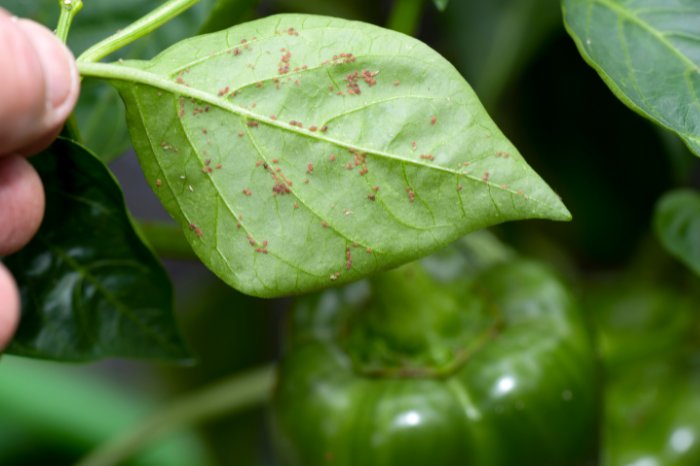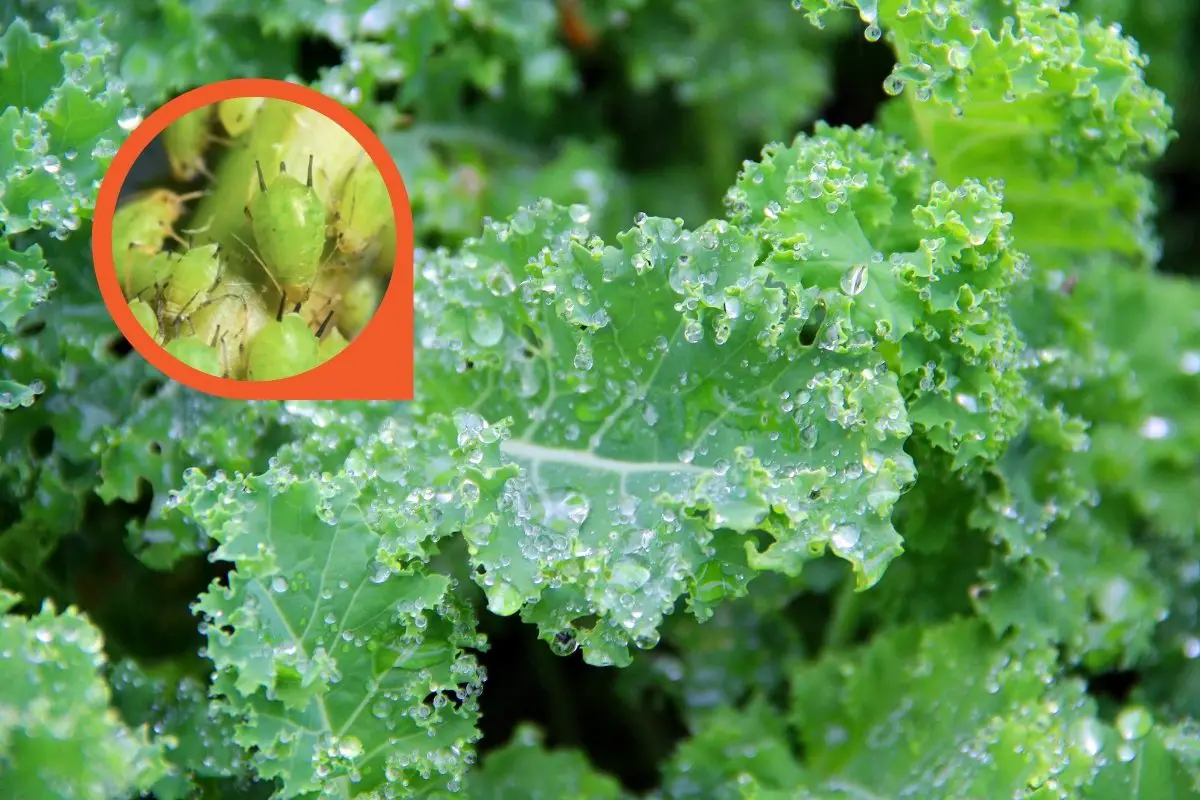Last Updated on November 28, 2022 by Cristina
You probably won’t be eating aphids on kale, but if you do, is it safe? Here’s everything you need to know about these tiny critters!
Aphids are white bugs that create a cloudy coat on green vegetables. They rapidly reproduce and can infect all your crops within weeks. It’s best to prevent these bugs from entering your garden. Luckily, there are a few ways to do this!
In this article, I discuss aphids in detail and share how you can keep them out of your garden for good.
What Are The Little White Bugs On Kale?
The small, fuzzy white bugs on your kale are likely aphids. These tiny critters find their way into almost every garden! They form part of the Aphidoidea superfamily and suck the juices from plants to stay alive. Aphids drain the fluid from soft stems, buds, and fruit.
Is It Safe To Eat Kale With Aphids?
Aphids can make your kale bitter, but they are safe to consume. When you see these bugs on your crops, it’s up to you to decide whether you want to eat them or not.
How Do You Remove Aphids From Kale Before Cooking?
If you’re wary of eating aphids on kale, you can wash them off before cooking it. After harvesting your kale, simply swirl it around in cold water with an added pinch of salt or a drop of soap. Let your kale soak in the water for a while before swirling it again. Finally, rinse the kale under clean water.
3 Ways To Get Rid Of Aphids On Kale
Getting rid of aphids isn’t easy, especially when you have a large infestation. While running kale under cold water will rid a few bugs, you’ll have to resort to other methods if these critters have started damaging your crops. Here are 3 ways you can try to get rid of aphids on kale:
Spray Your Kale With A Hose
You can eliminate an aphid infestation by spraying your kale leaves with water. You’ll have to do this frequently since aphids like to stick. Spray the kale leaves in the morning on high power and again in the evening. Ensure you reach all of the leave. You should let your kale completely dry between hosing sessions.
Trim You Kale Leaves – Eating Aphids On Kale
If the aphids haven’t spread to your entire crop, cut the infected leaves. Wait a day and inspect your kale again. Trim back any other infestations you spot. Don’t leave the cut leaves near your kale or other crops, and don’t compost them.
Use An Organic Pesticide
You can create your own organic pesticide to help halt an aphid infestation. There are many recipes available. Once you have a liquid mixture, apply it to your kale with a spray bottle until the aphids are gone. It can take up to two weeks for the entire infestation to be killed, so don’t give up too fast.
How To Avoid Aphid Infestations On Kale
Gardening smarter can help eliminate the chance of an aphid infestation on your kale. With none around, you won’t have to worry about accidentally eating aphids on kale! One of the best ways to minimize the risk of an aphid infestation is by planting the right crops.
Aphids commonly target leafy veggies, those growing underground, fruit trees, and herbs. If you avoid planting these, you won’t have to worry about aphids as much. You can also plant them far from each other to prevent aphids from spreading between crops if one is infested.
AgroMagen, GrowSafe Bio-Pesticide, Organic Natural Miticide, Fungicide and Insecticide
Having plants that repel aphids in your garden will also help. You can choose herbs like basil, catnip, chives, cilantro, dill, garlic, lavender, mint, oregano, rosemary, and thyme. Plant them around your crops or between them. Doing this will help keep aphids away.
Another preventative method is to attract natural predators to your garden to help fight off aphids. Birds, green lacewings, and ladybugs like to feast on these tiny critters. Having clover, dill, fennel, and mint in your garden can help lure these predators to it.
Click Here to Get Info About:
- Can You Put Pine Straw Over Mulch? Mulch Ado About Nothing!
- Cold Damage In Tomato Plants: Signs And Solutions
How The Weather Affects Aphids – Eating Aphids On Kale
Aphids prefer warm weather, but they don’t want to scorch. They’re most active during autumn and spring when it’s sunny but still cool. Aphids will be active all year round if you live in a mild area.
If you spot a few aphids on your kale, you should immediately get rid of them. They can produce up to 80 offspring within weeks. If the weather is favorable, these can develop from newborn to adult in less than 10 days.
Interesting Facts About Aphids
- Aphids Have Many Enemies. They’re a sweet treat (supposedly) and perfect for predators who want a feast without looking far. One plant can host thousands of aphids, turning it into a bowl of yum for hungry predators.
- Aphids Reproduce Incredibly Fast. Females can birth without mating, significantly shortening the developmental cycle of these critters.
- Aphids Feed On Plump Plant Tissue, which mainly consists of sugar. In turn, they poop a sweet, sugary droplet called honeydew. Your plants can quickly be coated in this if you have a large aphid infestation.
- Aphids Have Defensive Mechanisms. They release chemical signals when under attack to alarm the others and will kick their predators.
- Aphids Don’t Lay Eggs. They give birth to live young who mature within weeks and do the same.

In Ending – Eating Aphids On Kale
Aphids are fascinating little critters, but you don’t want to spot them on your crops. While many people ignore them and continue consuming their kale as usual, you can wash these bugs off beforehand. If you do eat them, you’ll be fine.
I suggest learning how to use companion plants with your leafy greens. These will keep aphids away from your plump veggie stems and ensure your leaves stay whole.
I hope this article was a good read and informative. If you have unique aphid-repelling tips to share or any more questions about these critters, pop them in the comments!
Take Out Time to Also Read:



